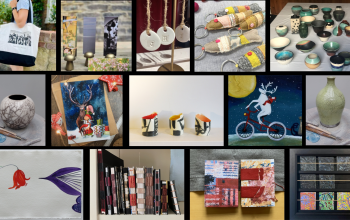With the nominees for this year’s £25,000 Turner Prize having been announced last week to a tirade of disdain and disbelief, has Modern Art become a mockery of the true values of artistic virtue?
One favourite for this year’s controversial prize, Paul Noble, 48, spent 15 years drawing his entry- a fictional city populated by sexually driven human faeces. Is this a work of revolutionary genius, or a crowdpleaser, intended to maintain the award’s air of notoriety?
A spokeperson for the Tate Britian said that the prize “is intended to promote public discussion of new developments in contemporary British art and is widely recognised as one of the most important and prestigious awards for the visual arts in Europe.”
But arguably today, the millions who visit exhibits of Modern Art do so in order to contemplate the art’s financial and controversial, rather than aesthetic values.
Arriving at the Tate Modern to examine Damien Hirst’s latest exhibition, it was certainly questionable whether the hordes of queuing visitors really appreciated Hirst’s fascination with life and death, or if they just wanted to witness controversy quite literally in the flesh.
Upon entering the first room, it was clear that many did not want to dwell to admire Hirst’s early, banal, artworks, including arrangements of coloured pots and pans, with an obvious lack of gore.
Instead, the crowds swiftly moved onto the next room, which promised to fulfil their morbid fantasies with ‘A Thousand Years’, a transformation of maggots into flies, feasting on a rotting cow’s head before meeting their death courtesy of an electric fly-killer.
Visitors seem mesmerised by the brutality of Hirst’s fascination with death, but also, the interactive nature of the exhibition.
The cow’s head, for example, omitted unpleasant odours, causing visitors to exchange horrified whispers and revolted glances. One pale-faced young-man waiting outside of the display said: “It made me want to gag.”
The interactivity of the exhibition extended to Room five, ‘In and Out of Love’, where hundreds of butterflies hatch, live and die in the boxy, humid room; all watched by gawping tourists.
Many were fascinated by the life cycle, with one visitor saying “it’s the full circle of life and you don’t normally get to see it happen right in front of your eyes.”
The room allowed visitors to delve deeper into Hirst’s psyche and interacting with the ‘artwork’ prompted guests to feel alive; the artist’s ultimate aim.
Various motifs were repeated throughout the retrospective; cigarettes appear in two rooms, but Hirst’s message is often lost on visitors, in particular when a giant ashtray forced visitors to retreat from a room because of the overpowering stench of stale smoke.
Often, rather than gasping in horror or repulsion, people would giggle in amusement, suggesting we have been desensitised to a once shocking art form.
A Fine Art student visiting the exhibition said: “I found it strange to see people forming orderly queues to look at the insides of a baby calf and its mother, a seemingly rather morbid and disgusting sight.”
It seems that Hirst continues to be so popular because he manages to reveal, criticise, observe and facilitate, our perverse fascination with death and preservation.
Vickie Amiralis, curator of London’s famous Vinyl Factory, believes that people go to see Hirst’s art because they are “overwhelmed by his ‘originality’ and how much money he makes at auction.”
Hirst’s love of money was apparent in the penultimate room of the exhibition, an element obviously crucial to the self-defined ‘salesman’. Highlighting his extravagant Sotheby’s sale, fetching him a reported £111 million.
Hirst is believed to be Britain’s richest living artist with an estimated wealth of £215m stated in the 2010 Sunday Times Rich List.
So why are people willing to pay out millions for Hirst’s work? Ms Amiralis said that as a “figurehead” of the 90s art scene his “aesthetics are appreciated and acknowledged through his buyers.”
“Shock is an element of emotion and therefore if a piece of art was to release shock then it would be said to be a success,” she added.
Hirst gains a great deal of pleasure in instigating this effect, once stating about his art: “It’s got a lot of people shocked, but I quite like that. Shocking people is enough sometimes for me to just do it for that reason.”
This reaction to his work has in itself made Hirst a star, not just of the art world, but also as a celebrity. Young British Artists like Hirst and Tracey Emin have successfully transformed themselves into self-contained corporations, meaning that Emin and Hirst are famous largely for being Emin and Hirst.
That celebrity image has in itself become a part of their art and, crucially, a reason why people will continue to queue to see it.




